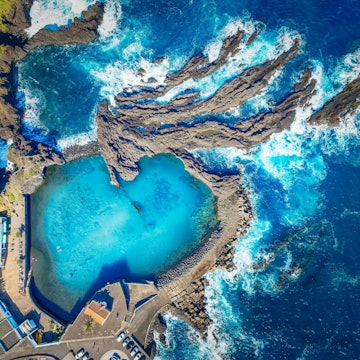

Plan your location carefully so you can be sure there isn't too much sitting around with younger children. Steve Cole 178020 / Getty Images
From an early age children are often enthralled by the natural world, and the chance to see those animals they’ve learnt about live in their natural habitat can be an incredible family trip. However, getting into the wild usually involves a significant amount of traveling, the exercising of considerable amounts of patience and the very real need to understand and accept safety instructions, all of which can make taking a safari feel like something better suited to adults and older teenagers.
Luckily for those of us who dream of taking our younger kids on a wildlife-watching tour of Africa or the rainforests of South and Central America, there are plenty of ways to make a safari family-friendly.

1. Start small
Before you book a fully-fledged safari, weave a visit to a game park into your next family holiday or plan a day out to a local one. A game park is a protected area where wild animals live naturally but they tend to be more accessible and set up for visitors to come just for a day.
By visiting a game park you can see how long your children can sustain watching wild animals and learn how you might handle long time periods in a truck waiting to see something. South Africa is a good place to try this as you can combine the game parks with the penguins at Boulder Beach and exploring the Garden Route.
2. Check age limits
Due to the safety considerations involved in watching wild animals many safari organizations will not take kids younger than a certain age, which is often 12 but in some cases can be younger. Before you part with any money read the fine print. Even if a company will take children on a safari outing, it pays to have a good conversation about how they handle having kids along for the ride. Family-friendly means different things to different people and you should opt for an organization which is either recommended by other families or has family-specific itineraries on offer. In particular, make sure you ask about how group activities work: a large group of older travellers may not be the most natural travel companions for your family.
3. Choose your destination carefully
Unless you have children who positively embrace being contained in moving vehicles for long periods of time it’s likely that you will want to minimize the amount of traveling you need to do just to get to the animals each day.
Some safaris offered in East Africa are very remote. If you are looking for easy access, consider instead destinations relatively near Nairobi (Nairobi National Park), Dar es Salaam (Mikumi National Park), or Namibia (Etosha National Park). Whichever safari locale you're considering, research is key. It's worth considering questions like what a typical day would look like, whether sightings are common or rare, and what would happen if a child desperately needed a toilet stop at a point where no-one could leave the truck.
4. Consider self-drive
Let’s face it, the most stressful element of travelling with kids is navigating the general public. Taking a safari is an expensive business and you don’t want to feel responsible for someone’s trip of a lifetime being ‘ruined’ by your children.
Self-drive is a great adventure for a family and allows you the flexibility to go out for a few hours only, turn back to camp when someone needs a wee (a portable potty can work wonders here) and keep boredom at bay without judgement (keep the snacks coming). If you want to take the adventure up a notch, in some areas you can hire camper vans with roof tents for double the fun.
Related content: Are you ready for a self-drive safari in Africa? Travelling Costa Rica with kids
5. Invest in a local guides or book a private tour
A good local guide (who either travels with you or takes you out in their own vehicle) is worth their weight in gold in terms of engaging your kids, educating your whole party, showing you creatures and natural life you might otherwise miss, taking the pressure off the adults for a couple of days, and learning about the local culture and lifestyle. And if those reasons weren’t enough, it is also an important chance to put something back into the community you are visiting.

6. Bring binoculars and wildlife books
Family travel blogger Jurga Van Steenbergen gave us this tip the first time we went on safari with the kids and it’s one of the best bits of advice we had: get each member of your party their own binoculars which they then need to look after. When you finally spot that elusive rhino you do not want to be caught in a tug of war between squabbling siblings.
Equally children’s books which detail the different animals you will see are key. Much of safari is seeing the same more common animals again and again so being able to spot differences and learn about them in detail passes time.
Related content: Travelling to Africa with my young daughters: a father's story
Namibia: the perfect African adventure for families with little explorers
The ultimate playground: plan a Botswana safari for kids
7. Help the kids capture the moment
You might also want to consider giving each child their own camera – and be thankful that we live in the digital age and no longer have to pay for millions of prints filled with the blurry backsides of retreating lions. When you’re dealing with a long wait, allowing each child the chance to capture their own memories can be a great distraction.
Likewise a sketchbook is another good way to capture the memories. Take photos of what they draw for your ‘trip of a lifetime’ photobook.

8. Don’t forget about birds or smaller creatures
Whether it’s the big five in Africa, tigers in India or the famous sloths of Costa Rica, the bigger animals tend to draw the crowds when it comes to safari. But one of the great things about travelling with kids is their ability to make you look at things differently. Children are often equally interested in some of the smaller animals and with a bit of guidance can find birds fascinating to watch (and photograph). Don't overlook the chance to see the "little five" everywhere from Central America to Ethiopia.
9. Stay somewhere with a pool
Being on safari requires a lot of quiet and patience from all concerned, so having a good way to let off steam when you’re back from the drive can pay dividends for family life. A swimming pool is an obvious plus for most kids, but equally a playground, football pitch, or tennis court can all work. Mixing up the activities so you do a day of wildlife-watching and then a day doing something active can work well in countries such as Costa Rica but is harder to implement in the African bush.
10. Be prepared to be vigilant
Lastly, as we’ve already said, taking children to watch animals in the wild does usually come attached with a health and safety warning. Your kids need to be able to understand and adhere to instructions when it comes to their safety (no running, always stick with an adult, never leave the truck or camp on their own and so on) but you also have to be prepared to be on watch at all times. Having a sundowner in the African bush is something you want to remember for the calm and beauty – not because your youngest decided to make friends with a nearby zebra when your back was turned.
Subscribe to our Lonely Planet Kids newsletter and get 30% off your first Lonely Planet Kids book purchase.













